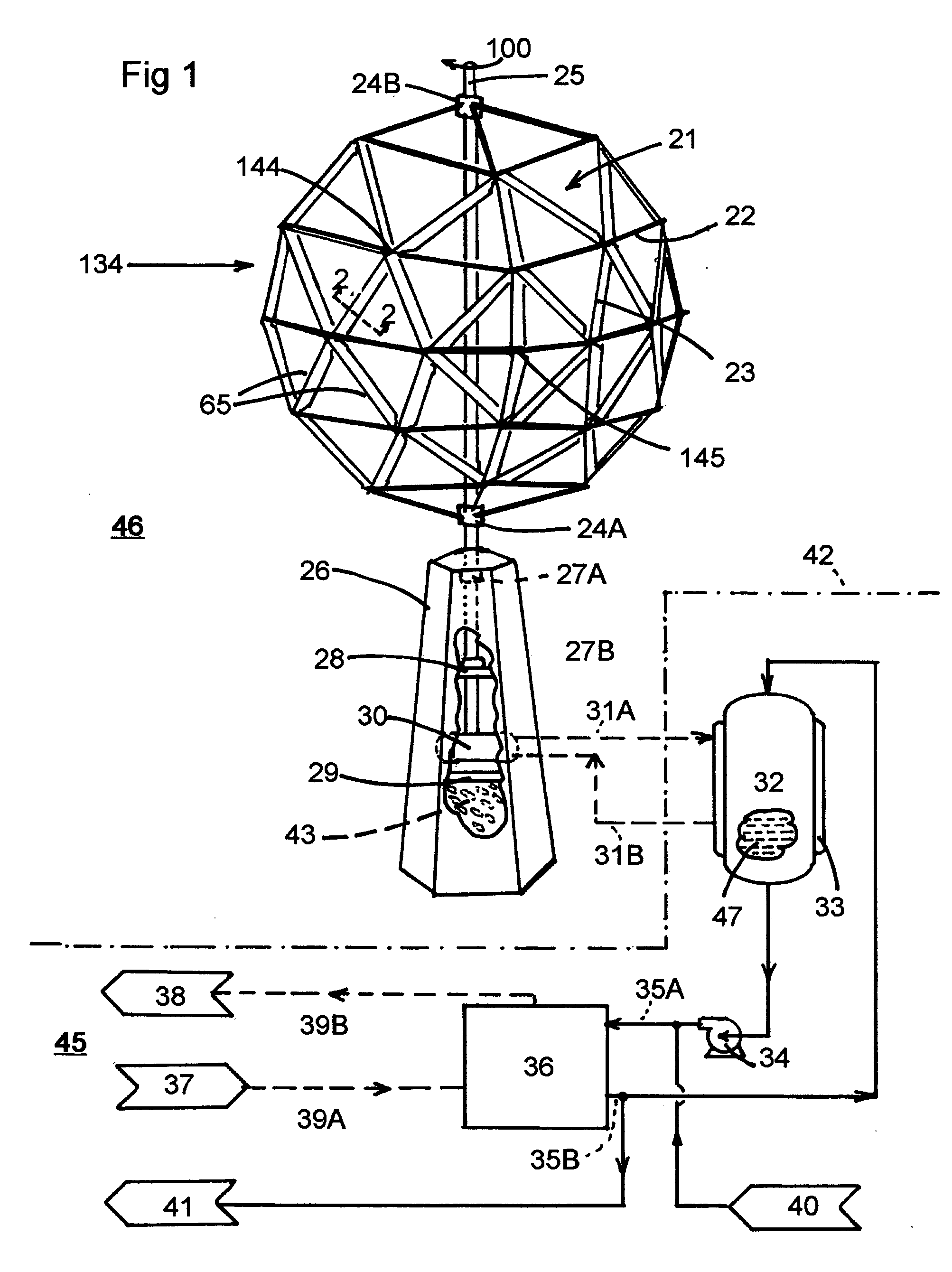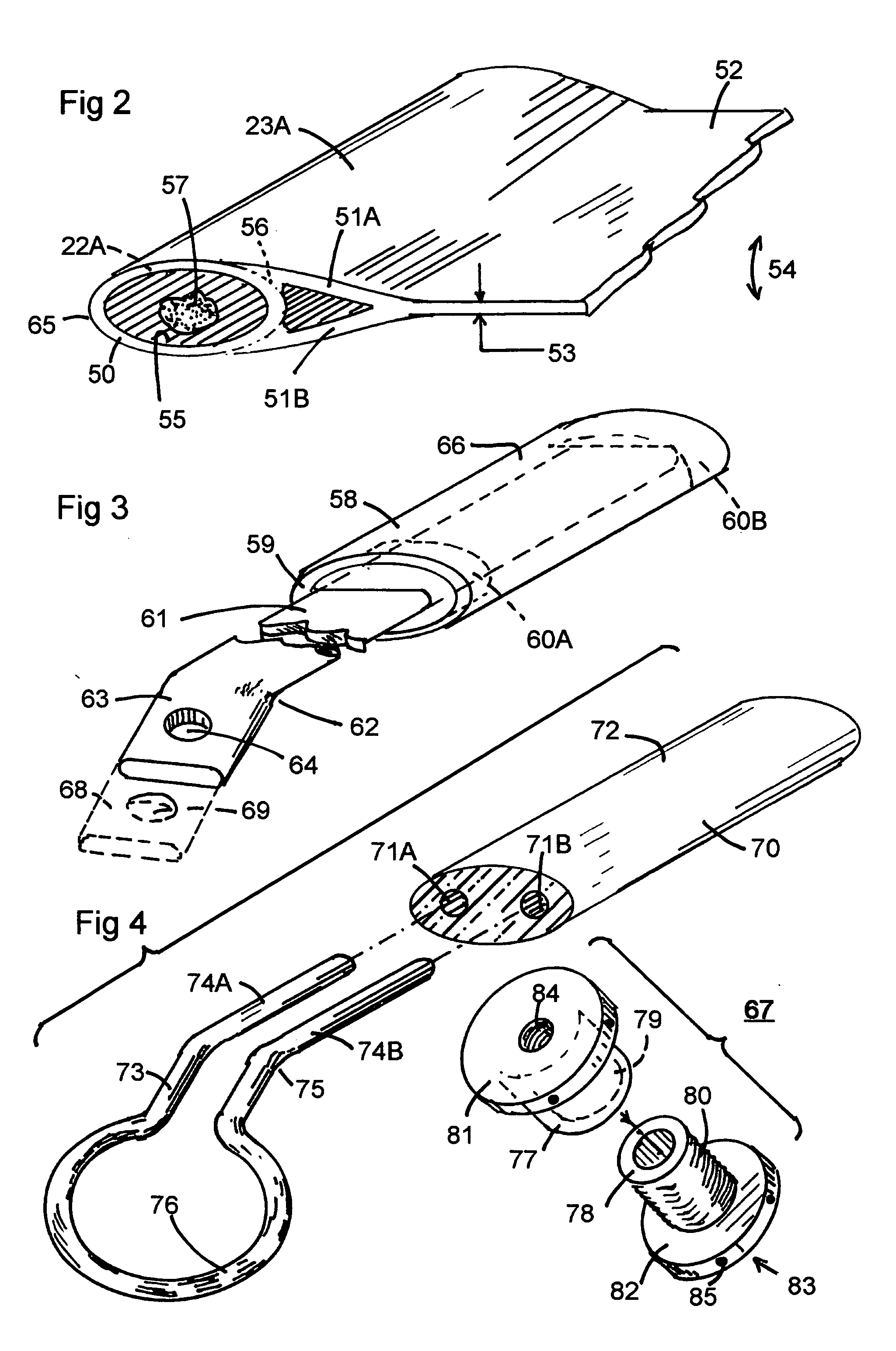Wind turbine and energy distribution system
a technology of wind turbines and energy distribution systems, applied in the direction of wind energy generation, wind motors with perpendicular air flow, liquid fuel engine components, etc., can solve the problems of increasing the complexity of the composite cross-section design of three-blade horizontal axis, the difficulty of integrating and connecting variable off-shore wind resources to existing shore-based power plants, and the limited frequency and access to the grid. achieve the effect of relieved growing energy demand, improved energy independence and the environmen
- Summary
- Abstract
- Description
- Claims
- Application Information
AI Technical Summary
Benefits of technology
Problems solved by technology
Method used
Image
Examples
Embodiment Construction
Wind Turbine and Heating Systems
[0038] In the preferred embodiment of the invention, a wind energy resource 134 turns a novel vertical axis wind turbine 21 driving a thermal generator 30 to supply heat to a conventional heat pump system 45 for a commercial, industrial or agricultural building, (not shown). In areas of modest wind energy resources, an integrated wind heating system 46; allows for economical competition with the rising cost of natural gas, and the freeing of natural gas supply to uses such as electrical generation and transportation.
[0039] Turbine 21 is made up of a dome structure assembled from structural struts 22 and blade struts 23. (FIG. 1) The blade struts 23 all have leading edges 65 that are oriented in the same circumferential direction to reinforce rotation 100, (clockwise from above) of the turbine. The dome structure illustrated has octahedral symmetry with what is termed a three-frequency breakdown, (i.e.; each spherical segment is divided into three eq...
PUM
 Login to View More
Login to View More Abstract
Description
Claims
Application Information
 Login to View More
Login to View More - R&D
- Intellectual Property
- Life Sciences
- Materials
- Tech Scout
- Unparalleled Data Quality
- Higher Quality Content
- 60% Fewer Hallucinations
Browse by: Latest US Patents, China's latest patents, Technical Efficacy Thesaurus, Application Domain, Technology Topic, Popular Technical Reports.
© 2025 PatSnap. All rights reserved.Legal|Privacy policy|Modern Slavery Act Transparency Statement|Sitemap|About US| Contact US: help@patsnap.com



